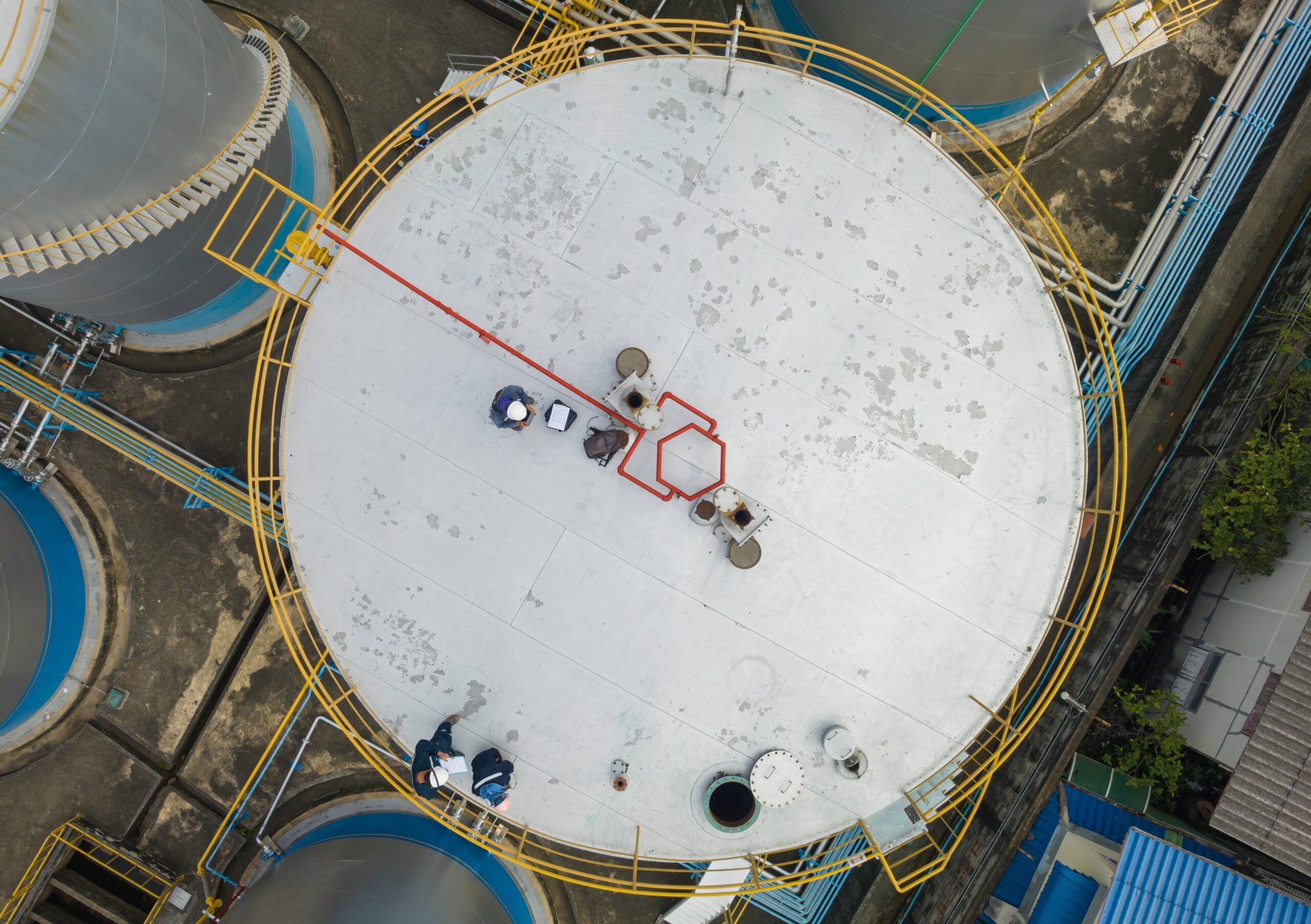If your aboveground storage tanks are more than 20 years old—and many are—you may not have a clear picture of what’s going on beneath the surface.
That’s not just an oversight. It’s a risk. One that can compromise safety, environmental compliance, and the long-term reliability of your operations.
At this year’s NISTM Conference, leaders across tank storage, energy, and inspection services came together to discuss the industry’s biggest vulnerabilities. And one issue kept coming up: we don’t know what we don’t know about our tanks.
“We’re seeing tanks that are 30, 40 years old. The problem isn’t that they’re old. The problem is nobody knows what’s been done to them—or when.”
— Josh Appel, Business Development Manager, CATSI
The Aging Tank Dilemma
Storage tanks—especially in petrochemical, power generation, and manufacturing sectors—are built to last. But “lasting” and “maintained” are two very different things.
Here’s the typical scenario we see:
- The tank is still operating.
- No obvious leaks or signs of failure.
- Inspection history is patchy—or nonexistent.
- Turnarounds are tight. Budgets are tighter.
The assumption is: if it isn’t broken, don’t fix it.
But the truth is, by the time something breaks, it’s too late. A tank bottom with undetected corrosion or a shell weld that hasn’t been inspected since install isn’t a time bomb—but it’s close.
And regulators like the EPA and state DEPs are paying closer attention. So are insurers.
The Hidden Costs of Neglecting Inspection
Neglecting regular inspections may seem like a way to save time or money, but it usually ends up costing far more in the long run.
Let’s break it down:
- Unplanned downtime
Emergency repairs often mean a full shutdown, not just of the tank, but of upstream and downstream processes. - Environmental risk
Undetected corrosion or roof damage can lead to leaks, contamination, and regulatory violations. - Inaccurate service life projections
If you don’t know the current condition, how can you forecast longevity? - Limited insurance coverage
Some policies may not cover failure if maintenance records are missing or outdated.
The real problem? Most of these failures were preventable. But only if you had the right data at the right time.
What a Modern Inspection Strategy Looks Like
At CATSI, we believe inspections shouldn’t be about ticking boxes. They should be about building confidence—confidence in your assets, your safety, and your ability to plan ahead.
Here’s what we see working in the field:
1. Risk-Based Inspection Schedules (RBI)
The days of “inspect every 10 years” are long gone. API 653 allows for flexible scheduling based on:
- Tank age
- Contents
- Environmental conditions
- Previous findings
We help our clients build RBI programs that actually reflect real-world risk—not just code minimums.
2. Non-Destructive Examination (NDE) That Goes Deeper
From ultrasonic thickness (UT) readings to magnetic particle testing, CATSI uses proven NDE methods to assess:
- Corrosion rates
- Weld integrity
- Settlement and foundation shifts
- Coating and lining performance
These tools give you a clearer picture of what’s happening inside your tank—without taking it offline longer than needed.
3. Digital Documentation and Traceability
Most facilities struggle with documentation. We make it easy. Our inspection reports are:
- Delivered digitally
- QR-coded for instant access
- Easily shareable with regulators, engineers, and internal teams
It’s not just more efficient—it’s how you maintain continuity when teams change or facilities expand.
What Clients Gain by Getting Ahead
We’ve worked with clients across power, chemical, and refining sectors who initially came to us “just to get compliant.”
But what they gained was far more:
- Clarity about what’s really going on with their assets
- Credibility with regulators and stakeholders
- Control over maintenance planning and budgeting
- Confidence in extending the useful life of their infrastructure
Some even identified issues that could’ve led to catastrophic failure—and fixed them months or years in advance.
Why Thought Leadership Matters in Inspection
This year’s NISTM reinforced something we’ve believed for decades: Inspection should be proactive, not reactive.
The industry doesn’t need more vendors. It needs partners—teams that understand the real-world challenges of running critical infrastructure, and who can apply expertise without disrupting operations.
With 40+ years in the field, CATSI has earned that trust.
But more importantly, we want to share that knowledge, not just sell services. That’s why we’re committed to putting out educational content like this—to raise the standard across the board.
Final Thought: Don’t Let “Nothing’s Wrong” Be Your Risk Strategy
If you haven’t reviewed your tank inspection program recently—or you don’t know when the last full internal was conducted—it’s time to start asking questions.
Not because it’s required. Because it’s smart.
Let’s take a look together.
Contact CATSI to schedule a conversation or site visit. We’ll help you understand where you stand—and how to move forward with confidence.

